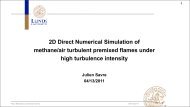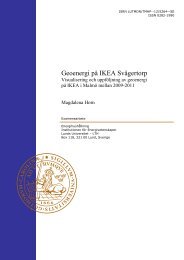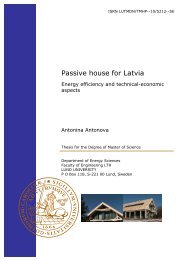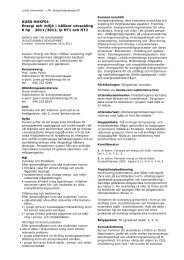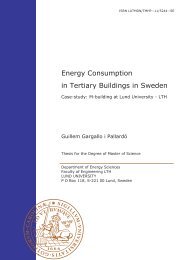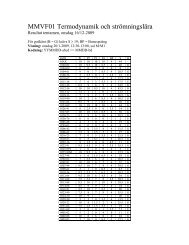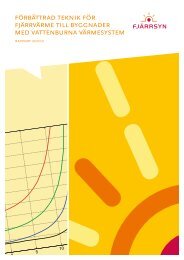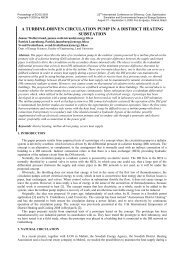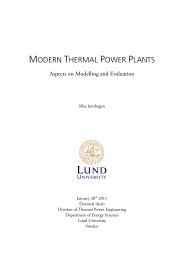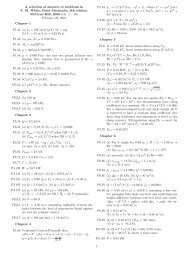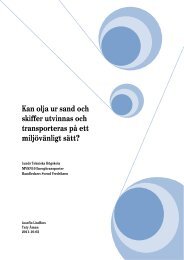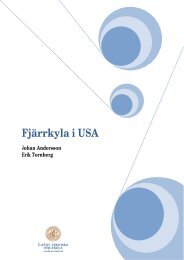Thesis for degree: Licentiate of Engineering
Thesis for degree: Licentiate of Engineering
Thesis for degree: Licentiate of Engineering
You also want an ePaper? Increase the reach of your titles
YUMPU automatically turns print PDFs into web optimized ePapers that Google loves.
The reaction rates <strong>for</strong> SF=1 (left) and SF=5 (right) are presented in Figure 4.13. It should be<br />
mentioned that the temperature distribution was overall quite similar <strong>for</strong> the cases. When<br />
SF=1 the temperature was overall lower <strong>for</strong> the larger part <strong>of</strong> the cell. For the case with<br />
SF=5, the lowest temperature was much closer to the inlet than <strong>for</strong> SF=1 and the three cases<br />
with varying methane content. The temperature distribution has an effect on the reaction rates.<br />
The pr<strong>of</strong>iles <strong>of</strong> the reaction rates are quite different. For SF=1, the maximum rate value <strong>of</strong> the<br />
water-gas-shift reaction is not reached until just upstream from the outlet but, on the other<br />
hand, <strong>for</strong> SF=5, it is reached close to the inlet. The steam re<strong>for</strong>ming reaction shows the same<br />
tendency but it is slightly higher <strong>for</strong> SF=1 to begin with. The water-gas-shift reaction rate was<br />
low because the mole fraction <strong>of</strong> CO is initially so small. Furthermore, the water-gas shift<br />
reaction is connected to the steam re<strong>for</strong>ming reaction, which affects the pr<strong>of</strong>ile throughout the<br />
cell.<br />
50



